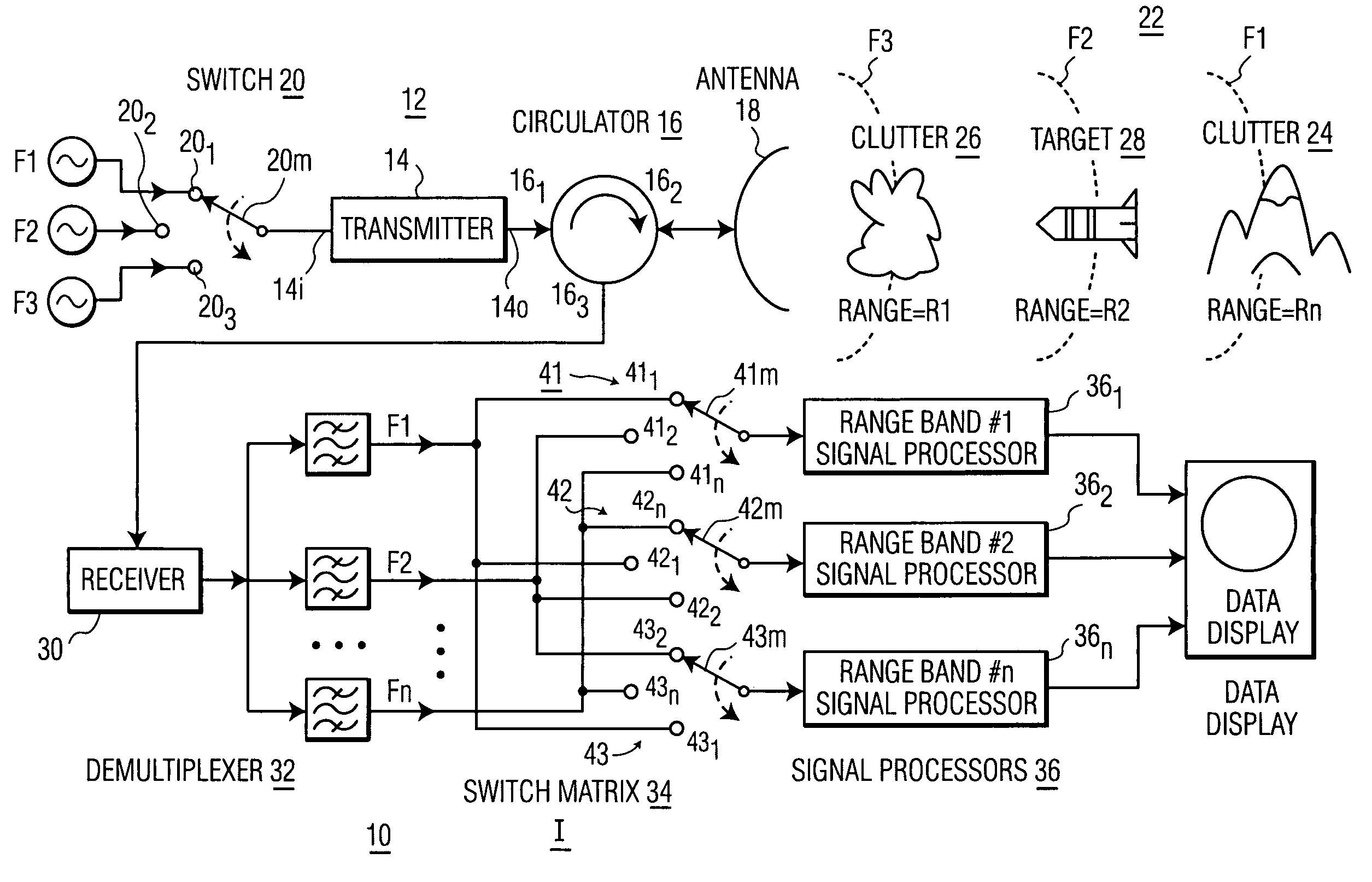Orthogonal pulse range ambiguity resolution
a range ambiguity and orthogonal pulse technology, applied in the field of active range determination systems, can solve the problems of longer time required to produce all the information, pulse duration, transmitted energy,
- Summary
- Abstract
- Description
- Claims
- Application Information
AI Technical Summary
Benefits of technology
Problems solved by technology
Method used
Image
Examples
Embodiment Construction
[0021]In FIG. 1a, a radar system 10, which is taken to be representative of any type of active ranging system such as sonar or lidar, includes a transmitter arrangement designated generally as 12. Transmitter arrangement 12 includes a transmitter illustrated as a block 14, the output port 14o of which is coupled by way of ports 161 and 162 of a circulator 16 to an antenna represented as a reflector 18. Those skilled in the art know that other types of antennas, such as arrays, can be used. First, second and third waveform generators WF1, WF2, and WF3 are coupled to terminals 201, 202, and 203, respectively, of a switch 20. Switch 20 is conventionally represented as being a mechanical single-pole, triple-throw switch, but those skilled in the art will understand that this is but a convention for ease of understanding, and that electronic switch equivalents are used in practice. A movable member 20m of switch 20 sequentially contacts terminals 201, 202, and 203 during operation, there...
PUM
 Login to View More
Login to View More Abstract
Description
Claims
Application Information
 Login to View More
Login to View More - R&D
- Intellectual Property
- Life Sciences
- Materials
- Tech Scout
- Unparalleled Data Quality
- Higher Quality Content
- 60% Fewer Hallucinations
Browse by: Latest US Patents, China's latest patents, Technical Efficacy Thesaurus, Application Domain, Technology Topic, Popular Technical Reports.
© 2025 PatSnap. All rights reserved.Legal|Privacy policy|Modern Slavery Act Transparency Statement|Sitemap|About US| Contact US: help@patsnap.com



